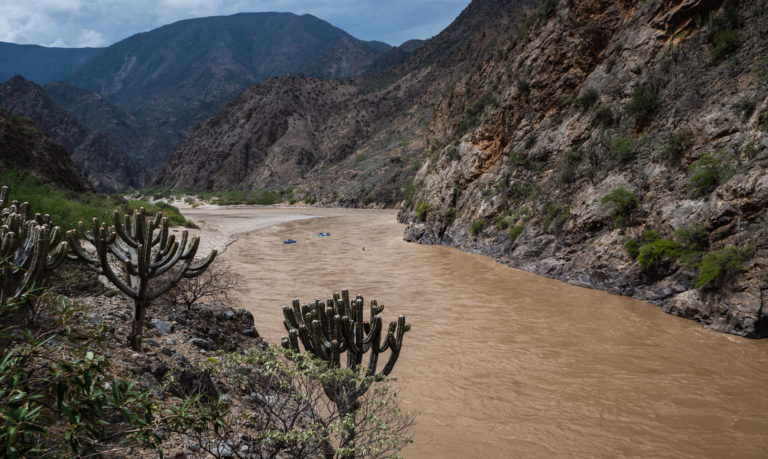A win for the Marañón? Energy company moves to terminate dam contract, but what will the Peruvian government do?
By: Ellen Simon

One of the companies with a concession to build a mega dam on the Marañón River, the main hydrological source of the Amazon, has formally asked the Peruvian government to terminate its contract.
Global energy company Enel, which has the concession to build the Veracruz dam on the Marañón, said in a recent letter to Waterkeeper Alliance that its request for termination is being evaluated by Peruvian authorities. The company added that it will not be making public statements about the request until the administrative review is complete.
If built, the Veracruz dam would be 525 feet high. It would inundate nine small communities, flood ancient pictographs, and 225 hectares of farmland and 3,000 hectares of native forest. It would also act as a wall blocking migrating fish.
Enel’s response was part of a joint campaign by the Peruvian Society for Environmental Law, Marañón Waterkeeper, and Waterkeeper Alliance, which are fighting 20 planned dams on the river. The groups are urging the Peruvian government to review existing contracts to build the dams, to grant no new contracts, and to begin planning for a future of the Marañón River and its canyon that includes tourism and the protection of ancient rock paintings.
The groups’ video about a village that would be flooded by one of the dams received has been viewed more than 49,000 times and was covered by media outlets from Pittsburgh to Mumbai, including Latin Finance and Latin Business. The groups have collected more than 4,400 signatures on a petition asking the Peruvian government to halt the dams.
Enel’s decision to ask the government to terminate its dam concession makes sense from economic, ecological, and cultural standpoints.
Economically, the dam would not be commercially viable, thanks to a Peruvian energy surplus projected to last until 2030, at least. The only way the dam would be commercially viable is if the Peruvian government decides to buy the energy at a fixed price for a long term, which they did for two other big dams in the past, creating an unfair scenario for non-conventional renewable energy and also causing huge economic problems for ElectroPeru, a state-run electricity company that hundreds of thousands of retirees depend upon for their pensions.
Ecologically, the dam would serve as a wall, blocking migratory fish and starving the Amazon of sediments that are the building blocks of downstream forests and agricultural systems on floodplains.
It would create a reservoir that would flood more than 3,000 hectares (8,000 acres) of Marañón dry forest, an ecosystem with 143 species that only exist in the Marañón valley, and has some of the world’s highest levels of endemism, defined as species native to this location. The number of species native to the valley rivals the Galapagos islands.
That’s not the only environmental destruction the dam would cause. Because the reservoir would accumulate vast amounts of organic matter, which would decompose underwater, the dam would be a formidable source of greenhouse gas emissions, emitting an estimated 98,138 metric tonnes of CO2 equivalent over its lifetime.
Culturally, the dam would flood dozens of paintings and petroglyphs in the area. The people of a local town, Lonya Grande, have turned against the project because of the impact it would have on its thriving coffee industry. The dam would also damage an artisanal and commercial fishery which nourishes hundreds of thousands of local and indigenous peoples.
Enel’s CEO, Francesco Starace, has said in interviews not related to this project that the company is moving toward greener projects and is moving away from big dams because of their negative impacts. He has said that building big dams and infrastructure projects that take longer than five years to build was an industry mistake, one his company will not repeat.
It’s time the Peruvian government and other concession-holders for dams on the Marañón learned the same lesson.
Do you want to take action for the Marañón? Sign the petition asking Peru’s President, Martín Vizcarra, to ensure this dam and others do not get built.
Feature image by Mathieu Coldebella / Marañón Waterkeeper Collection.